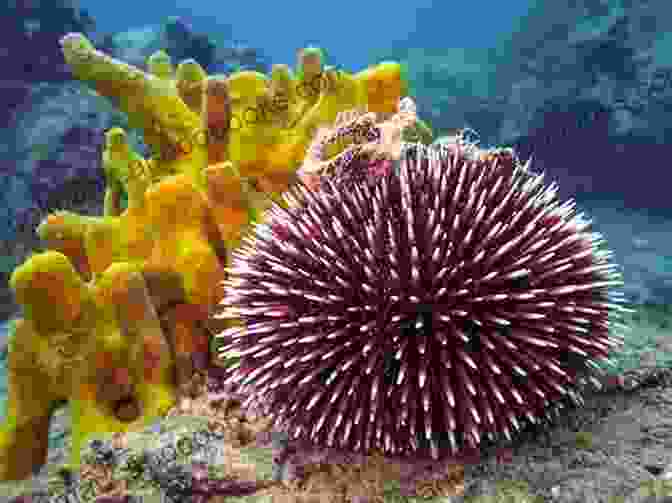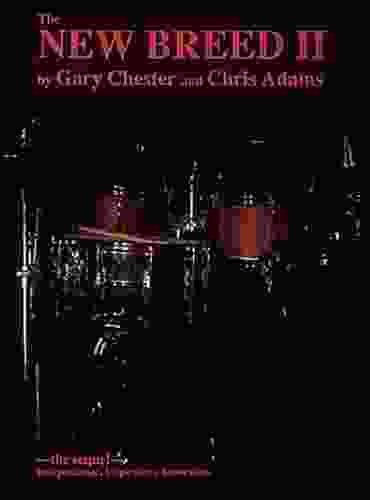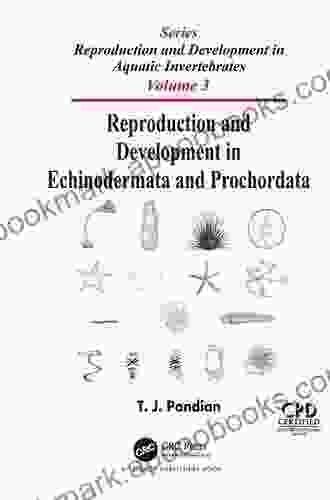Reproduction and Development in Echinodermata and Prochordata


The vast and enigmatic world of marine invertebrates and chordates holds a treasure trove of evolutionary wonders, including the mesmerizing echinoderms and the enigmatic prochordates. These creatures, with their intricate anatomies and diverse life cycles, provide a fascinating glimpse into the complexities of reproduction and development in the animal kingdom.
4.6 out of 5
| Language | : | English |
| File size | : | 9720 KB |
| Text-to-Speech | : | Enabled |
| Screen Reader | : | Supported |
| Enhanced typesetting | : | Enabled |
| Print length | : | 286 pages |
Echinodermata: Masters of External Fertilization
Echinoderms, a phylum of marine invertebrates, are renowned for their unique body plan characterized by radial symmetry and a hard, spiny exoskeleton. Their reproductive strategies are equally remarkable, with most species relying on external fertilization.
During reproduction, male and female echinoderms release their gametes (sperm and eggs) into the surrounding water. Fertilization occurs externally, resulting in the formation of a zygote. The zygote undergoes a series of cell divisions, transforming into a free-swimming larva known as an echinopluteus.
The echinopluteus larva is a marvel of nature, adorned with ciliated bands that allow it to navigate the water column. As it develops, the larva undergoes metamorphosis, gradually losing its larval features and developing the distinctive characteristics of an adult echinoderm.
Prochordata: A Bridge Between Invertebrates and Vertebrates
Prochordates, another phylum of marine invertebrates, occupy a unique position in the animal kingdom, bridging the gap between invertebrates and vertebrates. Their reproductive strategies exhibit a blend of ancestral invertebrate traits and vertebrate innovations.
Unlike echinoderms, most prochordates engage in internal fertilization. The male transfers his sperm into the female's body through a specialized duct. The fertilized egg undergoes development within the female's reproductive system, receiving nourishment from surrounding tissues.
As the prochordate embryo develops, it exhibits remarkable similarities to vertebrate embryos. It forms a notochord, a rod-like structure that serves as the precursor to the vertebral column in vertebrates. It also develops a dorsal nerve cord and a rudimentary brain, foreshadowing the complex nervous systems of higher animals.
Evolutionary Adaptations: Shaping Reproductive Strategies
The reproductive strategies of echinoderms and prochordates have been shaped by millions of years of evolutionary adaptations. External fertilization in echinoderms is believed to be an adaptation to their often-dispersed populations and the need to synchronize spawning events.
Internal fertilization in prochordates, on the other hand, may have evolved as a way to protect the developing embryo from external threats and ensure its survival in diverse aquatic environments.
The presence of a notochord in prochordate embryos is a testament to their evolutionary relationship with vertebrates. It suggests that the notochord, a defining feature of vertebrate anatomy, originated in these primitive chordates.
: Unraveling the Mysteries of Reproduction and Development
The study of reproduction and development in echinoderms and prochordates provides invaluable insights into the diversity and evolution of life in the oceans. By unraveling the intricate processes involved in these creatures' reproductive cycles and developmental pathways, we gain a deeper understanding of the interconnectedness of life and the incredible adaptations that have shaped the animal kingdom.
The book "Reproduction and Development in Echinodermata and Prochordata" is an essential resource for anyone seeking to delve into the captivating world of these marine wonders. It offers a comprehensive exploration of their reproductive strategies, developmental processes, and evolutionary adaptations, shedding light on the mysteries that lie beneath the waves.
4.6 out of 5
| Language | : | English |
| File size | : | 9720 KB |
| Text-to-Speech | : | Enabled |
| Screen Reader | : | Supported |
| Enhanced typesetting | : | Enabled |
| Print length | : | 286 pages |
Do you want to contribute by writing guest posts on this blog?
Please contact us and send us a resume of previous articles that you have written.
 Book
Book Novel
Novel Page
Page Chapter
Chapter Text
Text Story
Story Genre
Genre Reader
Reader Library
Library Paperback
Paperback E-book
E-book Magazine
Magazine Newspaper
Newspaper Paragraph
Paragraph Sentence
Sentence Bookmark
Bookmark Shelf
Shelf Glossary
Glossary Bibliography
Bibliography Foreword
Foreword Preface
Preface Synopsis
Synopsis Annotation
Annotation Footnote
Footnote Manuscript
Manuscript Scroll
Scroll Codex
Codex Tome
Tome Bestseller
Bestseller Classics
Classics Library card
Library card Narrative
Narrative Biography
Biography Autobiography
Autobiography Memoir
Memoir Reference
Reference Encyclopedia
Encyclopedia E Pauline Johnson
E Pauline Johnson Theodore Raymond Riddle
Theodore Raymond Riddle Lisa Darcy
Lisa Darcy Jon Katz
Jon Katz Moira Linehan
Moira Linehan Shanshan Peer
Shanshan Peer H W Bryce
H W Bryce Dr Howard Rankin
Dr Howard Rankin Gretchen Givens Generett
Gretchen Givens Generett Gail Godwin
Gail Godwin Hiag Akmakjian
Hiag Akmakjian Will Bunch
Will Bunch Dr Widad Akreyi
Dr Widad Akreyi Joan Didion
Joan Didion Earl Rogers
Earl Rogers Gulmakai Saleh
Gulmakai Saleh Edgar Holmes
Edgar Holmes Elizabeth Lynn Casey
Elizabeth Lynn Casey Dr Rob Brosh
Dr Rob Brosh Elin Waterston
Elin Waterston
Light bulbAdvertise smarter! Our strategic ad space ensures maximum exposure. Reserve your spot today!
 Jared NelsonFollow ·3.9k
Jared NelsonFollow ·3.9k D'Angelo CarterFollow ·19.4k
D'Angelo CarterFollow ·19.4k Rudyard KiplingFollow ·6k
Rudyard KiplingFollow ·6k Federico García LorcaFollow ·18.4k
Federico García LorcaFollow ·18.4k Emilio CoxFollow ·7.6k
Emilio CoxFollow ·7.6k Reginald CoxFollow ·2.5k
Reginald CoxFollow ·2.5k Adam HayesFollow ·10.6k
Adam HayesFollow ·10.6k Douglas FosterFollow ·2.3k
Douglas FosterFollow ·2.3k

 Eugene Powell
Eugene PowellFat Cat Stories: Level At Word Family - A Purrfect Start...
Introducing the 'At'...

 William Powell
William PowellUnveiling the Treasures of Russian Poetry: The Cambridge...
Immerse yourself in the...

 Roberto Bolaño
Roberto BolañoUnveiling the Treasures of Beowulf: A Guided Tour with...
: Delving into the...

 Foster Hayes
Foster HayesTransport, Climate Change and the City: Tackling Urban...
Transport is a major...

 Calvin Fisher
Calvin FisherHow To Make It In The Music Industry: The Ultimate Guide...
Are you an aspiring musician with...

 Rick Nelson
Rick NelsonUnveiling the Enigmatic World of Gary Chester's "The New...
Step into a World...
4.6 out of 5
| Language | : | English |
| File size | : | 9720 KB |
| Text-to-Speech | : | Enabled |
| Screen Reader | : | Supported |
| Enhanced typesetting | : | Enabled |
| Print length | : | 286 pages |












